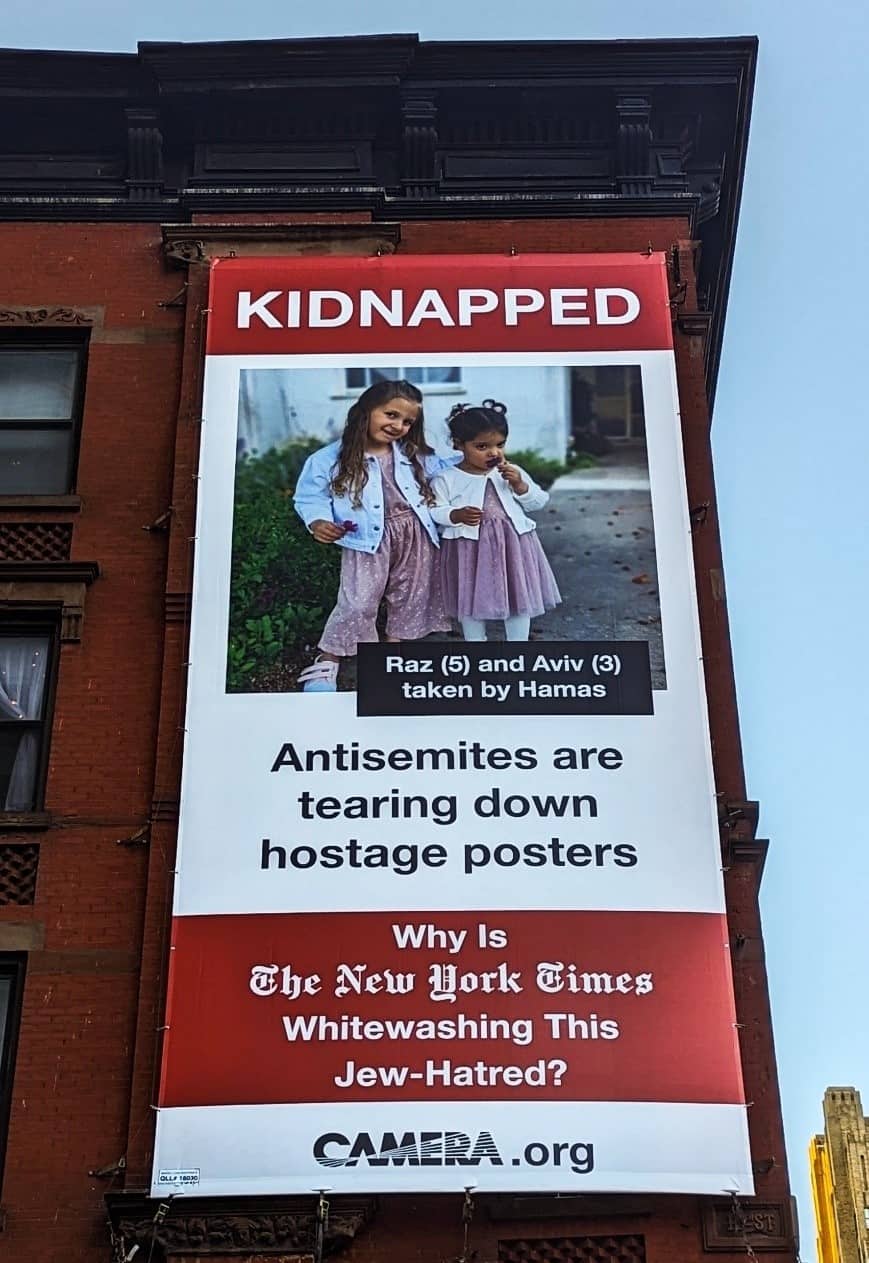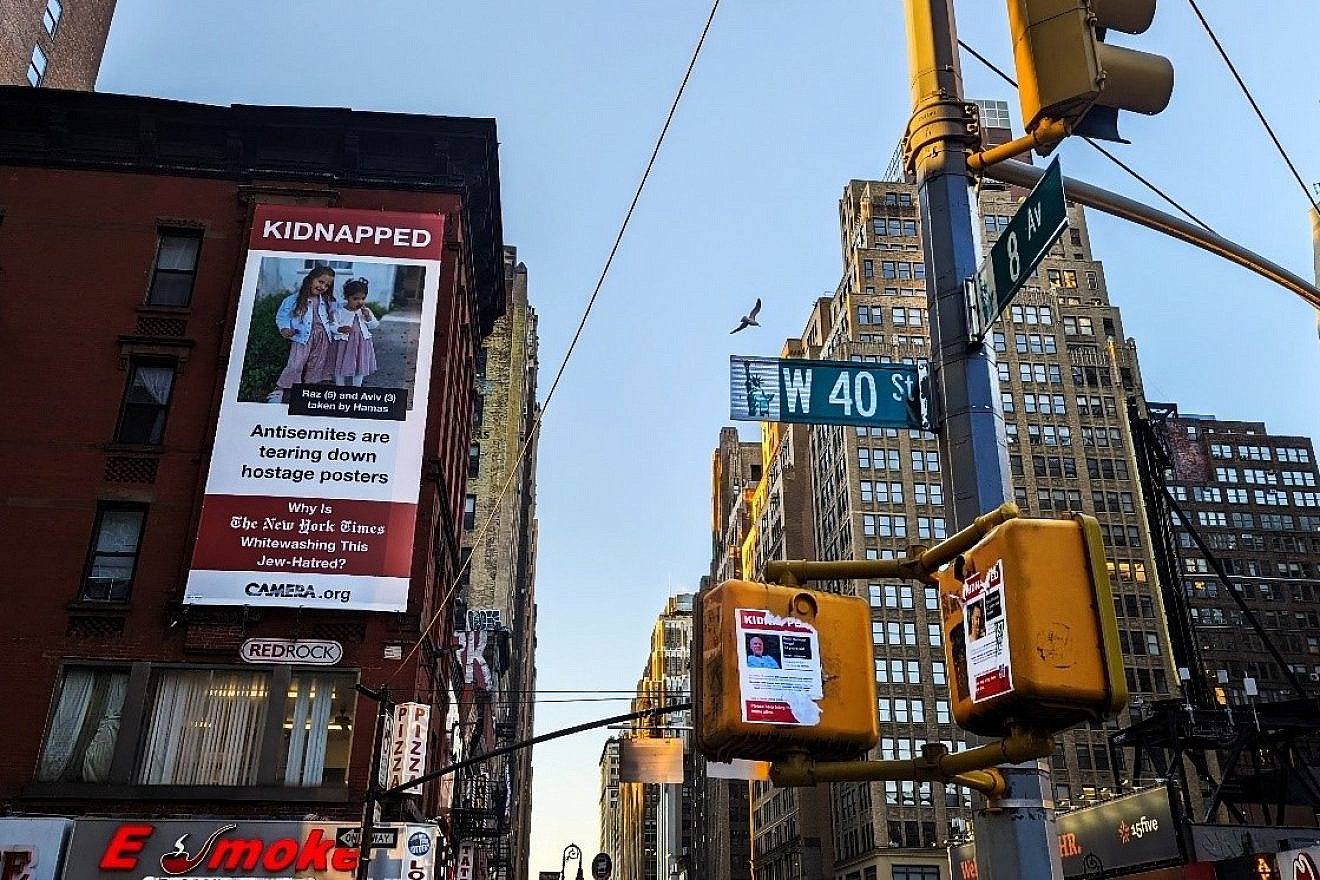Coincidentally, vandals defaced two posters depicting Israeli hostages that Hamas terrorists are holding in the Gaza Strip near a large billboard CAMERA took out near the Midtown Manhattan offices of The New York Times. According to the Mideast watchdog group, it underscores “the truth of the sign’s message.”
“Kidnapped,” the billboard says in large letters, beneath which Raz, 5, and Aviv, 3, are depicted, clad in matching clothing. “Antisemites are tearing down hostage posters,” the ad states. “Why is The New York Times whitewashing this Jew-hatred?”
Since the advertisement went up, CAMERA has received “quite a lot of support” on social media, and even relatives of the kidnapped girls contacted the watchdog saying “they were quite touched,” Lia Antebi, a spokeswoman for CAMERA, told JNS.
The New York paper of record has drawn a “false moral equivalence” between those who put up posters calling for the release of hostages and those who tear the posters down, per CAMERA.

“Their ‘both-sides’ approach creates a false moral balance, making the vandalism seem as valid as efforts to expose the suffering of hostages and seek their release,” said Gilead Ini, a senior analyst at CAMERA.
The watchdog cited Katherine Rosman’s article “How posters of kidnapped Israelis ignited a firestorm on American sidewalks” in the Times.
“Displaying the posters has become a form of activism, keeping the more than 200 hostages seized by Hamas in full view of the public,” Rosman wrote. “But removing the posters has quickly emerged as its own form of protest—a release valve and also a provocation by those anguished by what they say was the Israeli government’s mistreatment of Palestinians in the years before Oct. 7 and since the bombing of Gaza began.”
The “battle” over the posters “captures one of the most fervently debated questions of the war: Whose suffering should command public attention and sympathy?” the article added.


























